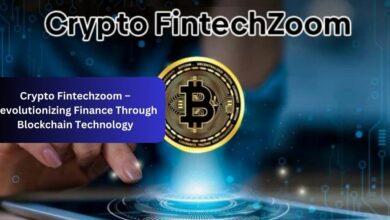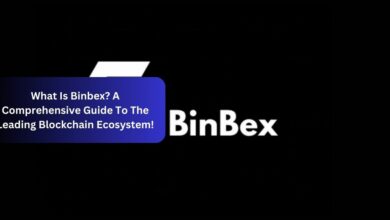Understanding DeFi: Decentralized Finance Explained
Understanding DeFi: Decentralized Finance Explained
In recent years, the world of finance has witnessed a significant transformation with the rise of DeFi, or Decentralized Finance. DeFi refers to a system where financial products are built on blockchain technology, eliminating the need for traditional intermediaries like banks. This revolutionary concept has gained immense popularity due to its potential to democratize finance and provide greater financial inclusion to individuals worldwide.
DeFi operates on decentralized networks, allowing users to access a wide range of financial services without relying on centralized authorities. Smart contracts, which are self-executing contracts with the terms of the agreement directly written into code, play a crucial role in enabling DeFi applications to function autonomously.
The Basics of DeFi
DeFi encompasses a broad spectrum of financial services, including lending, borrowing, trading, and asset management. These services are typically accessed through decentralized applications (dApps) that run on blockchain networks such as Ethereum. Users interact with these dApps using digital wallets, which enable them to manage their assets securely and participate in various DeFi protocols.
Key Features of DeFi
- Decentralization: DeFi platforms operate without a central authority, giving users full control over their funds and transactions.
- Transparency: All transactions on DeFi platforms are recorded on the blockchain, ensuring transparency and accountability.
- Interoperability: DeFi protocols are designed to be interoperable, allowing users to seamlessly move assets between different applications.
- Accessibility: DeFi opens up financial services to anyone with an internet connection, enabling greater financial inclusion globally.
Popular DeFi Protocols
- Uniswap: A decentralized exchange (DEX) that allows users to swap various cryptocurrencies without the need for an intermediary.
- Compound: A lending protocol that enables users to earn interest on their crypto assets by supplying them to the platform.
- MakerDAO: A decentralized lending platform that allows users to generate DAI stablecoin by locking up collateral.
- Aave: A decentralized lending and borrowing protocol that supports a wide range of cryptocurrencies.
Risks and Challenges in DeFi
While DeFi offers numerous benefits, it also comes with its fair share of risks and challenges. Security vulnerabilities, smart contract bugs, and regulatory uncertainties are some of the key concerns associated with DeFi platforms. Users need to exercise caution and conduct thorough research before participating in DeFi protocols to mitigate these risks.
Regulatory Landscape of DeFi
The regulatory environment surrounding DeFi is still evolving, with regulators worldwide grappling to understand and adapt to this innovative technology. Compliance with existing financial regulations and the development of new regulatory frameworks are essential to ensure the long-term sustainability and legitimacy of DeFi.
The Future of DeFi
As DeFi continues to gain traction and evolve, its potential to disrupt traditional finance and empower individuals with greater financial autonomy is becoming increasingly evident. The development of scalable and user-friendly DeFi solutions, along with enhanced security measures, will be crucial in driving the widespread adoption of decentralized finance in the years to come.
FAQs
1. What are the benefits of DeFi?
DeFi offers greater financial inclusion, transparency, and accessibility compared to traditional finance. Users can access a wide range of financial services without relying on intermediaries, enabling them to have more control over their assets.
2. How secure are DeFi platforms?
Security is a significant concern in DeFi due to the potential for smart contract vulnerabilities and hacking attacks. Users should exercise caution, conduct due diligence, and use secure wallets to protect their assets.
3. Can anyone participate in DeFi?
Yes, DeFi is designed to be accessible to anyone with an internet connection and a digital wallet. Users can interact with DeFi protocols and access financial services without the need for traditional banking infrastructure.
4. What is the role of smart contracts in DeFi?
Smart contracts play a crucial role in automating transactions and agreements on DeFi platforms. They enable self-executing contracts with predefined conditions, ensuring trustless and secure interactions between parties.
5. How can I get started with DeFi?
To get started with DeFi, users need to set up a digital wallet, acquire cryptocurrency assets, and connect to DeFi platforms through dApps. It’s essential to understand the risks involved and start with small investments.
6. What are the risks associated with DeFi?
Some of the risks in DeFi include smart contract vulnerabilities, impermanent loss in liquidity pools, regulatory uncertainties, and potential hacks on decentralized platforms. Users should be aware of these risks and take necessary precautions.
7. How is DeFi different from traditional finance?
DeFi operates on decentralized networks, eliminating the need for intermediaries like banks. It offers greater transparency, accessibility, and control over financial assets compared to traditional finance systems.
Conclusion
In conclusion, Understanding DeFi: Decentralized Finance Explained is essential for anyone looking to explore the world of decentralized finance. With its innovative technology, transparent protocols, and potential for financial empowerment, DeFi is reshaping the future of finance. By staying informed, exercising caution, and embracing the opportunities presented by DeFi, individuals can participate in this transformative financial ecosystem and unlock new possibilities for financial growth and autonomy. Embrace the future of finance with DeFi!

